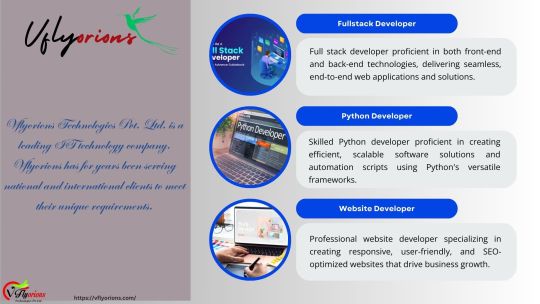#pythoncoder
Explore tagged Tumblr posts
Text
Raspberry Pi 5 / RP1 chip support for Neopixels with Python bindings coming soon 🎉💡🖥️🌈🐍
Hot off the PIO-presses, our resident Jepler created a Python binding for the Raspberry Pi 5 that lets us use the RP1 chip
on the 5/500 series boards to drive Neopixels using PIO. This is great because we can now use Neopixels
and friends on the latest Pi boards, and we can use any pin because PIO is not limited by underlying peripherals. You do need the latest kernel and firmware, so it is not quite ready for prime-time, but once piolib
is more readily available, we'll be able to have folks test this out.
#raspberrypi5#rp1chip#neopixels#pythonprogramming#pio#raspberrypi#adafruit#technews#opensource#hardwarehacks#makercommunity#ledlights#diyprojects#pythoncode#hardwaredevelopment#microcontrollers#embeddedprogramming#ledart#firmwareupdate#raspberrypilovers#neopixelmagic#techinnovation#raspberrypiupdate#codingcommunity#makerspace#iotprojects#diyhardware#ledprogramming#technologynews#pythonista
10 notes
·
View notes
Text
Top Free Python Courses & Tutorials Online Training | NareshIT
Top Free Python Courses & Tutorials Online Training | NareshIT
In today’s tech-driven world, Python has emerged as one of the most versatile and popular programming languages. Whether you're a beginner or an experienced developer, learning Python opens doors to exciting opportunities in web development, data science, machine learning, and much more.
At NareshIT, we understand the importance of providing quality education. That’s why we offer free Python courses and tutorials to help you kick-start or advance your programming career. With expert instructors, hands-on training, and project-based learning, our Python online training ensures that you not only grasp the fundamentals but also gain real-world coding experience.
Why Choose NareshIT for Python Training?
Comprehensive Curriculum: We cover everything from Python basics to advanced concepts such as object-oriented programming, data structures, and frameworks like Django and Flask.
Expert Instructors: Our team of experienced instructors ensures that you receive the best guidance, whether you're learning Python from scratch or brushing up on advanced topics.
Project-Based Learning: Our free tutorials are not just theoretical; they are packed with real-life projects and assignments that make learning engaging and practical.
Flexible Learning: With our online format, you can access Python tutorials and training anytime, anywhere, and learn at your own pace.
Key Features of NareshIT Python Courses
Free Python Basics Tutorials: Get started with our easy-to-follow Python tutorials designed for beginners.
Advanced Python Concepts: Dive deeper into topics like file handling, exception handling, and working with APIs.
Hands-on Practice: Learn through live coding sessions, exercises, and project work.
Certification: Upon completion of the course, earn a certificate that adds value to your resume.
Who Can Benefit from Our Python Courses?
Students looking to gain a solid foundation in programming.
Professionals aiming to switch to a career in tech or data science.
Developers wanting to enhance their Python skills and explore new opportunities.
Enthusiasts who are passionate about learning a new skill.
Start Learning Python for Free
At NareshIT, we are committed to providing accessible education for everyone. That’s why our free Python courses are available online for anyone eager to learn. Whether you want to build your first Python program or become a pro at developing Python applications, we’ve got you covered.
Ready to Dive into Python?
Sign up for our free Python tutorials today and embark on your programming journey with NareshIT. With our structured courses and expert-led training, mastering Python has never been easier. Get started now, and unlock the door to a world of opportunities!
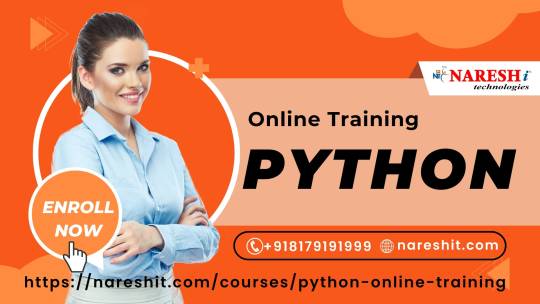
#python#pythontraining#freepythoncourse#onlinetraining#coding#pythontutorials#pythonforbeginners#programming#pythononline#learnpython#softwaretraining#freelearning#pythonprogramming#onlinetutorial#techtraining#pythoncourses#onlineeducation#pythoncode#codingforbeginners
2 notes
·
View notes
Text
Studying code calmly and avoiding a burnout. Day 2
(27/06/2023)
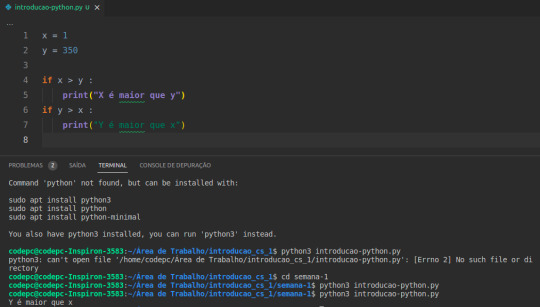
Hello everyone.
How are you? I hope well.
Today I continued my saga of studying calmly avoiding a burnout (it's serious but it's funny at the same time kkkkkk)
I finished module 1 of javascript and did well in the logic exercises.
And here I've been reflecting and comparing myself a lot with the June 2022 bea, she couldn't do a logic exercise and today I've mastered it well. Sometimes I get choked up. But I can always work it out if I really try.
I installed python 3.11 and here was another overcoming because as I have the linux terminal (I will never recommend it for beginners) I kept having to install and update the version. But today I got it.
(This exercise was to only test my terminal in vscode)
Hey, you must ask yourself, but why python if you have a front-end?
Because I need to learn function and ordering algorithms and I find it easier with python than with javascript. (precisely because I know more about python than js)
With this I started my introductory computer science course and I hope to finish it by Thursday. And how are your studies?
I wish you can overcome your obstacles to achieve your goals, discipline, constancy.
And my personal advice, when my goals aren't enough to motivate me, I decide to win in the power of hate.
Recommend, anger is good if you use it responsibly and intelligently. UEUEHHEUEEU. Drink water.
#womanintech#codeblr#software development#woman in stem#studyblog#coding#studyblr#software engineering#code#algorithms#study with me#study hard#studyblr community#college studyblr#studywithme#studyspo#pythonforbeginners#python#pythoncode#pythonprogramming#programmer#coder#developer#javascript
35 notes
·
View notes
Text
Primeros Pasos en Programación: Guía Completa
Introducción
Bienvenido al mundo de la programación. Si estás aquí, probablemente estás dando tus primeros pasos en el vasto campo del desarrollo de software. Puede parecer abrumador al principio, con tantos lenguajes, herramientas y conceptos desconocidos, pero no te preocupes. Este blog está diseñado para guiarte en este viaje, ofreciéndote una introducción clara y consejos prácticos para que puedas empezar con buen pie.
1. ¿Qué es la Programación?
La programación es el proceso de crear instrucciones que una computadora puede seguir para realizar tareas específicas. Estas instrucciones se escriben en un lenguaje de programación, que es un conjunto de reglas y sintaxis que los humanos pueden usar para comunicarse con las computadoras.
Lenguajes de Programación Populares:
Python: Fácil de aprender y ampliamente utilizado en ciencia de datos, desarrollo web, automatización y más.
JavaScript: El lenguaje del web, esencial para desarrollar aplicaciones y sitios interactivos.
Java: Famoso por su uso en aplicaciones empresariales y móviles (especialmente en Android).
C++: Utilizado en desarrollo de software de sistemas, juegos, y aplicaciones de alto rendimiento.
2. Conceptos Básicos de Programación
a) Variables y Tipos de Datos
Variables: Son contenedores que almacenan valores que pueden cambiar durante la ejecución del programa.
Ejemplo en Python: x = 5 asigna el valor 5 a la variable x.
Tipos de Datos: Representan la naturaleza de los valores almacenados en las variables.
Enteros: int (números sin decimales)
Flotantes: float (números con decimales)
Cadenas: str (secuencias de caracteres)
Booleanos: bool (True o False)
b) Estructuras de Control
Condicionales: Permiten que un programa tome decisiones.
Ejemplo: if x > 0: print("x es positivo")
Bucles: Ejecutan un bloque de código repetidamente.
Ejemplo: for i in range(5): print(i) imprimirá los números del 0 al 4.
c) Funciones
Las funciones son bloques de código reutilizables que realizan una tarea específica.
Ejemplo en Python: def suma(a, b): return a + b print(suma(2, 3)) # Salida: 5
3. Elige tu Primer Lenguaje de Programación
Si eres nuevo en la programación, te recomiendo empezar con Python por las siguientes razones:
Sintaxis Simple: La sintaxis de Python es clara y fácil de entender, lo que permite concentrarte en aprender conceptos básicos de programación sin enredarte en detalles complejos.
Comunidad Amplia: Hay muchos recursos de aprendizaje disponibles, incluyendo tutoriales, foros y documentación oficial.
Versatilidad: Python se utiliza en una amplia gama de aplicaciones, desde desarrollo web hasta inteligencia artificial.
4. Herramientas Esenciales
a) Entornos de Desarrollo Integrados (IDEs)
VS Code (Recomendado): Un editor de código ligero y personalizable que soporta múltiples lenguajes.
PyCharm: Un IDE robusto para Python que ofrece herramientas avanzadas para el desarrollo y depuración.
b) Control de Versiones
Git: Una herramienta esencial para el control de versiones, que te permite rastrear cambios en tu código y colaborar con otros desarrolladores.
GitHub: Un servicio basado en la nube que facilita la colaboración y el alojamiento de proyectos.
5. Primeros Proyectos para Principiantes
Comenzar con pequeños proyectos es una excelente manera de aplicar lo que has aprendido y adquirir confianza. Aquí tienes algunas ideas de proyectos:
Calculadora Básica:
Crea una calculadora que pueda realizar operaciones básicas como suma, resta, multiplicación y división.
Juego de Adivinanza de Números:
Un programa que elige un número al azar y pide al usuario que lo adivine. Puedes agregar funciones como limitar el número de intentos y dar pistas si el número es mayor o menor.
Lista de Tareas (To-Do List):
Una aplicación simple que permite a los usuarios agregar, eliminar y marcar tareas como completadas.
6. Consejos Útiles para Principiantes
a) Practica Regularmente
La programación es una habilidad práctica. Cuanto más código escribas, mejor entenderás los conceptos.
Utiliza plataformas como LeetCode o HackerRank para resolver problemas de programación.
b) No Tengas Miedo de Cometer Errores
Cometer errores es parte del proceso de aprendizaje. Cada error que cometes es una oportunidad para aprender algo nuevo.
c) Aprende a Buscar Información
Saber cómo buscar respuestas a tus preguntas es una habilidad vital. Stack Overflow es un recurso invaluable donde puedes encontrar soluciones a problemas comunes.
d) Colabora y Comparte tu Trabajo
Participa en comunidades de desarrolladores, como GitHub o Reddit. Compartir tu trabajo y colaborar con otros te expondrá a nuevas ideas y te ayudará a mejorar.
e) Mantente Curioso
La tecnología está en constante evolución. Mantente al día con las últimas tendencias y tecnologías para seguir creciendo como desarrollador.
7. Recursos Adicionales
a) Cursos y Tutoriales
CódigoFacilito (Página web): Ofrece una amplia variedad de cursos gratuitos en español sobre programación, desarrollo web, bases de datos y más. Además, cuenta con tutoriales y una comunidad activa que apoya el aprendizaje colaborativo.
freeCodeCamp (Página web): Un excelente recurso gratuito que cubre desde conceptos básicos hasta proyectos avanzados.
Desarrolloweb.com: Un portal completo que ofrece artículos, tutoriales y guías sobre programación y desarrollo web. Es una excelente fuente para aprender HTML, CSS, JavaScript, PHP, y otros lenguajes de programación.
Píldoras Informáticas (Canal de YouTube): Explica conceptos de programación y desarrollo de software en videos cortos y fáciles de entender.
HolaMundo (Canal de YouTube): Un canal dedicado a enseñar programación en español, con cursos completos de Java, Python, C++, y más.
Fazt Code (Canal de YouTube): Ofrece tutoriales y guías sobre desarrollo web, especialmente en JavaScript, Node.js, y frameworks modernos.
b) Libros Recomendados
“Python para todos” de Raúl González Duque: Este libro es una excelente introducción a Python, diseñado para principiantes. Está escrito de manera sencilla y práctica, ideal para quienes quieren aprender a programar desde cero.
“Aprende JavaScript desde cero” de Victor Moreno: Un libro que te guía paso a paso en el aprendizaje de JavaScript. Es perfecto para principiantes que desean entender el lenguaje desde sus fundamentos y aplicar lo aprendido en proyectos reales.
“Programación en C” de Luis Joyanes Aguilar: Este es un clásico en la literatura técnica en español, ideal para quienes desean aprender el lenguaje C, uno de los más fundamentales y poderosos en la programación.
“Introducción a la programación con Python” de Jesús Conejo: Otro excelente recurso para aprender Python, este libro está enfocado en estudiantes y autodidactas que desean adquirir una base sólida en programación utilizando Python.
“El gran libro de HTML5, CSS3 y JavaScript” de Juan Diego Gauchat: Este libro cubre los fundamentos del desarrollo web moderno, incluyendo HTML5, CSS3 y JavaScript. Es una guía completa para aquellos que quieren empezar a construir sitios y aplicaciones web.
Conclusión
Adentrarse en la programación es una experiencia emocionante y gratificante. Con paciencia, práctica y los recursos adecuados, estarás bien encaminado hacia convertirte en un desarrollador competente. Recuerda que cada experto fue una vez un principiante, y lo más importante es disfrutar del proceso de aprendizaje.
#programación#aprendiendoaprogramar#principiantesenprogramación#tutorialesdeprogramación#conceptosbásicosdeprogramación#python#javascript#coding#desarrollodesoftware#programadoresprincipiantes#programacion#codinglife#desarrolladores#aprendeaprogramar#empezandoaprogramar#comienzaaprogramar#programacionprincipiantes#codingforbeginners#programadoresnovatos#tutorialesdecoding#codetutorials#aprendecoding#basicosdeprogramacion#fundamentosdeprogramacion#codingsimplificado#pythoncode#pythonprogramming#pythondev#js#javascriptcode
6 notes
·
View notes
Text
PYTHONNN
GRRRR I HAVEN’T DRAWN HIM IN FOREVER!!! BUT I LOVE HIMMMMM

#python#pythoncode#sans#sansundertale#sans undertale#sans au#geno#genosans#i love my glitchy lil guy#hes 5'2 and very upset about it#he also sees everything on the internet and is... a lil insane because of it
2 notes
·
View notes
Photo

𝗠𝗮𝘁𝗵 𝗶𝘀 𝘃𝗲𝗿𝘆 𝗻𝗲𝗰𝗲𝘀𝘀𝗮𝗿𝘆 𝗳𝗼𝗿 𝘁𝗵𝗲 𝗳𝗶𝗲𝗹𝗱 𝗼𝗳 𝗺𝗮𝗰𝗵𝗶𝗻𝗲 𝗹𝗲𝗮𝗿𝗻𝗶𝗻𝗴 𝗮𝗻𝗱 𝗱𝗲𝗲𝗽 𝗹𝗲𝗮𝗿𝗻𝗶𝗻𝗴. 🌵Statistics and Probability Statistics and Probability is used for visualization of features, data preprocessing, feature transformation, data imputation, dimensionality reduction, feature engineering, model evaluation, etc. 🌵 Multivariable Calculus Most machine learning models are built with a data set having several features or predictors. Hence familiarity with multivariable calculus is extremely important for building a machine learning model. 🌵Linear Algebra Linear algebra is the most important math skill in machine machine. A data set is represented as a matrix. Linear algebra is used in data preprocessing, data transformation, and model evaluation. 🌵Optimization Methods Most machine learning algorithms perform predictive modeling by minimizing an objective function, thereby learning the weights that must be applied to the testing data in order to obtain the predicted labels. . . . #python #ai #machinelearning #datascience #ML #machinelearning #AI #artificialintelligence #deeplearning #DL #code #coding #python #pythoncode #programmer #programming #elearning #learning #opensource #codinglife #student #university #jupyternotebook #github #datascience #datavisualization #data #worksheet #interactive #inspiration (Venice - San Marco) https://www.instagram.com/p/Cp79UkYohc2/?igshid=NGJjMDIxMWI=
#python#ai#machinelearning#datascience#ml#artificialintelligence#deeplearning#dl#code#coding#pythoncode#programmer#programming#elearning#learning#opensource#codinglife#student#university#jupyternotebook#github#datavisualization#data#worksheet#interactive#inspiration
4 notes
·
View notes
Text
Sort Dictionaries by Key, or Value, in Python – Asc, Desc
Python includes a built-in function, the sorted() function, that we can utilize for efficiently sorting dictionaries by keys or values(in Asc or Desc order).
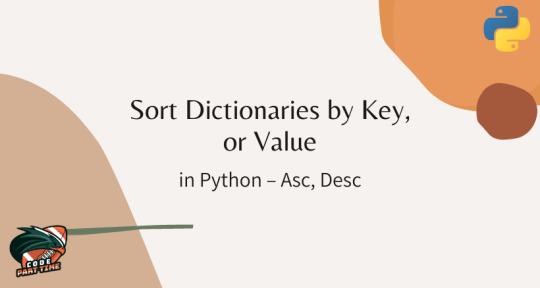
#pythondeveloper#pythoncod e#pythonprogramming#programming#codeparttime#code#python#python3#programminglanguage#programmer#programmingconcept#coding
2 notes
·
View notes
Text
Best Online Python Programming Course by Pro Academys: Master Python with Us
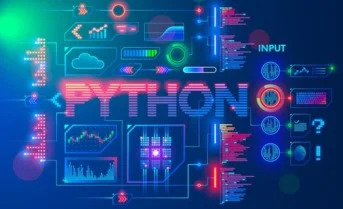
If you're looking to jumpstart your programming career or enhance your coding skills, then Pro Academys is here to help you succeed with the Best Online Python Programming Course available. Python is a versatile and powerful language, widely used in fields like data science, artificial intelligence, web development, and machine learning. At Pro Academys, we offer the most comprehensive and practical Best Online Python Programming Course designed to help learners of all levels, from beginners to advanced coders, become proficient in Python.
Why Choose Pro Academys for Python Programming?
At Pro Academys, we understand that learning Python can open doors to various career opportunities, making it essential to receive high-quality training. Our Best Online Python Programming Course is structured to provide in-depth knowledge and hands-on experience, ensuring you not only understand the theory but can also apply what you’ve learned to real-world projects. Whether you're a student looking to build your portfolio or a professional seeking to enhance your skill set, Pro Academys offers the Best Online Python Programming Course tailored to meet your needs.
Course Structure and Content
The Best Online Python Programming Course by Pro Academys is meticulously designed, covering all fundamental and advanced Python topics. The course is split into several modules, each focusing on key areas such as:
Introduction to Python: Learn the basics of Python programming, including syntax, variables, data types, and basic operators.
Control Structures: Master control flow in Python through loops, conditional statements, and functions.
Data Structures: Gain expertise in working with lists, tuples, dictionaries, and sets to handle complex data efficiently.
Object-Oriented Programming (OOP): Understand the principles of OOP and how to implement classes, objects, inheritance, and polymorphism in Python.
File Handling: Learn how to read from and write to files in Python, a crucial skill for working with data.
Error Handling and Debugging: Understand how to handle exceptions and debug your code efficiently.
Modules and Libraries: Explore Python’s vast ecosystem of libraries such as NumPy, Pandas, Matplotlib, and more.
Web Development with Python: Get introduced to Python frameworks like Django and Flask for web development.
Python for Data Science: Dive deep into how Python is used in data analysis and visualization.
Throughout this Best Online Python Programming Course, Pro Academys ensures that learners are provided with interactive exercises, real-world projects, and assignments that challenge and enhance their coding abilities.
Benefits of the Best Online Python Programming Course by Pro Academys
Flexibility: Our online platform allows you to learn Python at your own pace, from anywhere, and at any time. Whether you're a student or a working professional, the flexibility of the Best Online Python Programming Course ensures that you can balance your learning with other commitments.
Industry-Relevant Projects: One of the key features of the Best Online Python Programming Course is the inclusion of hands-on projects that simulate real-world problems. These projects are designed to prepare you for a career in programming or data science by giving you practical experience in solving complex challenges using Python.
Experienced Instructors: At Pro Academys, we have a team of highly qualified instructors with years of experience in Python programming and software development. They provide guidance and mentorship throughout the Best Online Python Programming Course, helping you master both the theoretical and practical aspects of Python.
Certification: Upon successful completion of the Best Online Python Programming Course, you'll receive a certification from Pro Academys that demonstrates your proficiency in Python programming. This certificate is a great addition to your resume and will give you an edge in the job market.
Career Support: At Pro Academys, we don’t just offer the Best Online Python Programming Course; we also provide ongoing career support. Our team offers career advice, resume building, and interview preparation services to help you land a job in programming, data science, or AI after completing the course.
Who Should Enroll in Pro Academys Best Online Python Programming Course?
The Best Online Python Programming Course by Pro Academys is perfect for:
Beginners: If you're new to programming and want to start with a language that's easy to learn yet highly versatile, Python is the ideal choice. The Best Online Python Programming Course starts with the basics and gradually moves into more advanced topics, ensuring that beginners have a solid foundation.
Data Enthusiasts: Python is the language of choice for data scientists, and our Best Online Python Programming Course covers essential libraries such as Pandas and NumPy, making it a must for anyone interested in data analysis and machine learning.
Working Professionals: If you're a professional looking to add Python to your skillset, our Best Online Python Programming Course offers the flexibility to learn at your own pace without disrupting your work schedule.
Students: Students who want to enhance their resumes and improve their job prospects in fields like data science, software development, or AI will benefit immensely from our Best Online Python Programming Course.
What Sets Pro Academy Apart?
At Pro Academy, we’re committed to providing the Best Online Python Programming Course that not only teaches Python but prepares you for the practical challenges of a programming career. We focus on making learning accessible, affordable, and engaging. Our community of learners is constantly growing, and we strive to make every student's experience productive and rewarding. Here’s what makes our Best Online Python Programming Course unique:
Interactive Learning: We believe in learning by doing. That's why our Best Online Python Programming Course includes quizzes, assignments, and coding challenges that help you apply what you’ve learned.
Peer Interaction: Learning with Pro Academys means becoming part of a vibrant community. You’ll have opportunities to collaborate with fellow students, share insights, and work on projects together, making the learning experience more enriching.
Lifetime Access: When you enroll in our Best Online Python Programming Course, you gain lifetime access to all the course materials, updates, and future content additions.
Enroll in Pro Academys Best Online Python Programming Course Today!
Python is one of the most in-demand programming languages today, and mastering it can significantly boost your career prospects. At Pro Academys, we offer the Best Online Python Programming Course that is not only affordable but also tailored to fit your personal learning style. Whether you're aiming for a career in software development, data science, or AI, our Best Online Python Programming Course will equip you with the skills needed to succeed in today's competitive job market.
Don’t miss this opportunity to learn Python from the best! Enroll in Pro Academys Best Online Python Programming Course today and take the first step toward a successful programming career.
Follow Us:
website: https://www.proacademys.com/
Email Id: [email protected]
Contact No.: +91 6355016394
#PythonProgramming#LearnPython#PythonForBeginners#PythonCourse#OnlinePythonCourse#BestPythonCourse#ProAcademyPython#PythonTraining#PythonDevelopers#PythonLearning#PythonSkills#PythonCoding#PythonCertification#ProgrammingWithPython#PythonOnlineClass#PythonMastery#LearnPythonOnline#PythonForDataScience#PythonExperts#PythonEducation
0 notes
Text
Scope Computers
Professional Data Science Training Program Master the art of data-driven decision-making with our comprehensive Data Science Training Program. Designed for beginners and professionals, this course provides in-depth knowledge and hands-on experience in data analytics, machine learning, artificial intelligence, and big data technologies.
Program Highlights: ✔ Comprehensive Curriculum – Covers Python, R, SQL, data visualization, and statistical analysis. ✔ Machine Learning & AI – Learn predictive modeling, deep learning, and neural networks. ✔ Big Data & Cloud Technologies – Hands-on training with Hadoop, Spark, and cloud platforms. ✔ Real-World Applications – Work on live projects and industry-relevant case studies. ✔ Expert-Led Training – Learn from experienced data scientists and industry professionals. ✔ Certification & Career Support – Earn a recognized certificate and receive job placement assistance.
🚀 Start your journey to becoming a data science expert today!
If you have any questions, please contact us now! 📩
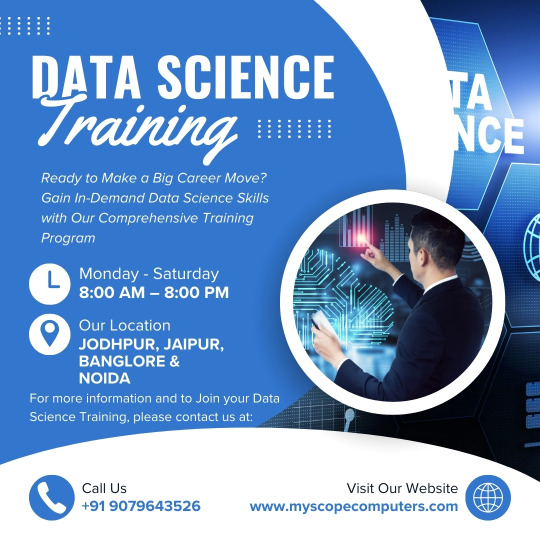
#scopecomputers#DataScience#OfflineTraining#CareerBoost#JodhpurCourse#DataScienceTraining#pythoncode#pythonlearning#machinelearningalgorithms#machinelearningengineering#artificial_intelligence#datascientist#dataanalyst#javaprogrammer#sqldeveloper#datasciencetraining
0 notes
Text
How to Use Python to Get Weight for SAPUI5 Fiori Apps from the Weigh Scale
Today, let’s look at a very real-world case. Are you aware of how shipping and freight companies handle a product’s weight? or in any other industry, such as airports? One person must interpret the reading and communicate the value to another, possibly distant person, in order to determine the weight of a bag. read more

#PythonForSAP#SAPUI5#FioriApps#WeighScaleIntegration#PythonCoding#IoTIntegration#SAPDevelopment#DataIntegration#SmartApps
0 notes
Text

0 notes
Video
youtube
Python Arrays Masterclass: Comprehensive Tutorials for Beginners to Advanced
#youtube#PythonProgramming LearnPython PythonTutorial DataStructures CodingInPython PythonDeveloper PythonCoding PythonForBeginners PythonTips Python
0 notes
Text
Studying code calmly and avoiding a burnout. Day 3
(29/06/2023)
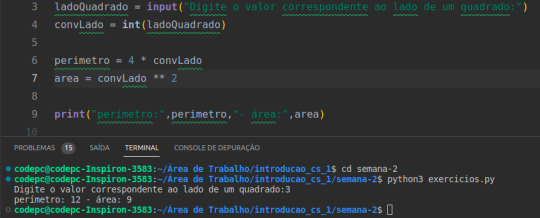
Hi everyone. how are you?
Here we are progressing.
Yesterday I didn't study code because I spent my day editing linkedin, sending requests and interacting with the women in my connection.
As I finally made my brain understand that networking is part of things to study and do to get a job, I slept tired but with a feeling of achievement and not of waste.
*Tired because I'm introverted and maybe autistic, so many interactions / conversations with strangers take a lot of energy.if it's with someone I know, it also demands me, but it takes longer for me to get worn out.
Today I started my introductory computer science course and this print comes from one of the exercises on the list.
7 modules to go and I'm doing well.
Maybe and probably I'll stay overnight because tomorrow I have to start part 2 of this course.
I'm not anxious because I have until Sunday to finish everything, but I want to finish my courses no later than Saturday at 18:00.
So we are doing well in the mission to study and avoid a burnout EUEUUHEHUE
Finally I wanted to give a final addendum that I laughed so hard with your @fishking reblog. This is my kind of humor and you are 100% right about "glimpse of a ruined mind" HUEHUEHHEHUEHUEEUEU.
Thanks for the laughs and since you wanted to read another diary, here it is.
Coming back, as far as possible, I wish you all to be well and if you are not, that you get well soon and manage to win your battles to get where you want to be.
Remember ,"WIN IN THE FORCE OF HATE IF NECESSARY" EHUHEUEEU
Have a great Friday and drink water.
#womanintech#codeblr#software development#woman in stem#studyblog#coding#studyblr#software engineering#code#algorithms#pythonforbeginners#python#pythoncode#pythonprogramming#100 days of code#learn to code#progblr
17 notes
·
View notes
Text
Building Predictive Models with Regression Libraries in Python Assignments
Introduction
Predictive modeling serves as a fundamental method for data-driven decisions that allows to predict outcomes, analyze trends, and forecast likely scenarios from the existing data. Predictive models are the ones that forecast the future outcomes based on historical data and helps in the understanding of hidden patterns. Predictive modeling is an essential technique in data science for applications in healthcare, finance, marketing, technology, and virtually every area. Often such models are taught to students taking statistics or Data Science courses so that they can utilize Python’s vast libraries to build and improve regression models for solving real problems.
Python has been the popular default language for predictive modeling owing to its ease of use, flexibility, and availability of libraries that are specific to data analysis and machine learning. From cleaning to building models, and even evaluating the performance of models, you can do all of these with Python tools like sci-kit-learn and stats models, as well as for data analysis using the pandas tool. Getting acquainted with these tools requires following certain procedures, writing optimized codes, and consistent practice. Availing of Python help service can be helpful for students requiring extra assistance with assignments or with coding issues in predictive modeling tasks.
In this article, we take you through techniques in predictive modeling with coding illustrations on how they can be implemented in Python. Specifically, the guide will be resourceful for students handling data analysis work and seeking python assignment help.

Why Regression Analysis?
Regression analysis is one of the preliminary methods of predictive modeling. It enables us to test and measure both the strength and the direction between a dependent variable [that is outcome variable] and one or more independent variables [also referred to as the predictors]. Some of the most commonly used regression techniques have been mentioned below: • Linear Regression: An easy-to-understand but very effective procedure for predicting the value of a dependent variable as the linear combination of the independent variables. • Polynomial Regression: This is a linear regression with a polynomial relationship between predictors and an outcome. • Logistic Regression: Especially popular in classification problems with two outcomes, logistic regression provides the likelihood of the occurrence of specific event. • Ridge and Lasso Regression: These are the more standardized types of linear regression models that prevent overfitting.
Step-by-Step Guide to Building Predictive Models in Python
1. Setting Up Your Python Environment
First of all: you need to prepare the Python environment for data analysis. Jupyter Notebooks are perfect as it is a platform for writing and executing code in small segments. You’ll need the following libraries:
# Install necessary packages
!pip install numpy pandas matplotlib seaborn scikit-learn statsmodels
2. Loading and Understanding the Dataset
For this example, we’ll use a sample dataset: ‘student_scores.csv’ file that consists of records of Study hours and Scores of the students. It is a simple one, but ideal for the demonstration of basics of regression. The dataset has two columns: Numerical variables include study hours referred to as Hours; and exam scores referred as Scores.
Download the students_scores.csv file to follow along with the code below.
import pandas as pd
# Load the dataset
data = pd.read_csv("students_scores.csv")
data.head()
3. Exploratory Data Analysis (EDA)
Let us first understand the data before we perform regression in python. Let us first explore the basic relationship between the two variables – the number of hours spent studying and the scores.
import matplotlib.pyplot as plt
import seaborn as sns
# Plot Hours vs. Scores
plt.figure(figsize=(8,5))
sns.scatterplot(data=data, x='Hours', y='Scores')
plt.title('Study Hours vs. Exam Scores')
plt.xlabel('Hours Studied')
plt.ylabel('Exam Scores')
plt.show()
While analyzing the scatter plot we can clearly say the higher the hours studied, the higher the scores. With this background, it will be easier to build a regression model.
4. Building a Simple Linear Regression Model
Importing Libraries and Splitting Data
First, let’s use the tool offered by the sci-kit-learn to split the data into training and testing data that is necessary to check the performance of the model
from sklearn.model_selection import train_test_split
# Define features (X) and target (y)
X = data[['Hours']]
y = data['Scores']
# Split data into training and test sets
X_train, X_test, y_train, y_test = train_test_split(X, y, test_size=0.2, random_state=42)
Training the Linear Regression Model
Now, we’ll fit a linear regression model to predict exam scores based on study hours.
from sklearn.linear_model import LinearRegression
# Initialize the model
model = LinearRegression()
# Train the model
model.fit(X_train, y_train)
# Display the model's coefficients
print(f"Intercept: {model.intercept_}")
print(f"Coefficient for Hours: {model.coef_[0]}")
This model equation is Scores = Intercept + Coefficient * Hours.
Making Predictions and Evaluating the Model
Next, we’ll make predictions on the test set and evaluate the model's performance using the Mean Absolute Error (MAE).
from sklearn.metrics import mean_absolute_error
# Predict on the test set
y_pred = model.predict(X_test)
# Calculate MAE
mae = mean_absolute_error(y_test, y_pred)
print(f"Mean Absolute Error: {mae}")
A lower MAE indicates that the model's predictions are close to the actual scores, which confirms that hours studied is a strong predictor of exam performance.
Visualizing the Regression Line
Let’s add the regression line to our initial scatter plot to confirm the fit.
# Plot data points and regression line
plt.figure(figsize=(8,5))
sns.scatterplot(data=data, x='Hours', y='Scores')
plt.plot(X, model.predict(X), color='red') # Regression line
plt.title('Regression Line for Study Hours vs. Exam Scores')
plt.xlabel('Hours Studied')
plt.ylabel('Exam Scores')
plt.show()
If you need more assistance with other regression techniques, opting for our Python assignment help services provides the necessary support at crunch times.
5. Improving the Model with Polynomial Regression
If the relationship between variables is non-linear, we can use polynomial regression to capture complexity. Here’s how to fit a polynomial regression model.
from sklearn.preprocessing import PolynomialFeatures
# Transform the data to include polynomial features
poly = PolynomialFeatures(degree=2)
X_poly = poly.fit_transform(X)
# Split the transformed data
X_train_poly, X_test_poly, y_train_poly, y_test_poly = train_test_split(X_poly, y, test_size=0.2, random_state=42)
# Fit the polynomial regression model
model_poly = LinearRegression()
model_poly.fit(X_train_poly, y_train_poly)
# Predict and evaluate
y_pred_poly = model_poly.predict(X_test_poly)
mae_poly = mean_absolute_error(y_test_poly, y_pred_poly)
print(f"Polynomial Regression MAE: {mae_poly}")
6. Adding Regularization with Ridge and Lasso Regression
To handle overfitting, especially with complex models, regularization techniques like Ridge and Lasso are useful. Here’s how to apply Ridge regression:
from sklearn.linear_model import Ridge
# Initialize and train the Ridge model
ridge_model = Ridge(alpha=1.0)
ridge_model.fit(X_train, y_train)
# Predict and evaluate
y_pred_ridge = ridge_model.predict(X_test)
mae_ridge = mean_absolute_error(y_test, y_pred_ridge)
print(f"Ridge Regression MAE: {mae_ridge}")
Empowering Students in Python: Assignment help for improving coding skills
Working on predictive modeling in Python can be both challenging and rewarding. Every aspect of the service we offer through Python assignment help is precisely designed to enable students not only to work through the assignments but also to obtain a better understanding of the concepts and the use of optimized Python coding in the assignments. Our approach is focused on student learning in terms of improving the fundamentals of the Python programming language, data analysis methods, and statistical modeling techniques.
There are a few defined areas where our service stands out
First, we focus on individual learning and tutoring.
Second, we provide comprehensive solutions and post-delivery support. Students get written solutions to all assignments, broken down into steps of the code and detailed explanations of the statistical method used so that the students may replicate the work in other projects.
As you choose our service, you get help from a team of professional statisticians and Python coders who will explain the complex concept, help to overcome technical difficulties and give recommendations on how to improve the code.
In addition to predictive analytics, we provide thorough consultation on all aspects of statistical analysis using Python. Our services include assistance with key methods such as:
• Descriptive Statistics
• Inferential Statistics
• Regression Analysis
• Time Series Analysis
• Machine Learning Algorithms
Hire our Python assignment support service, and you will not only get professional assistance with your tasks but also the knowledge and skills that you can utilize in your future assignments.
Conclusion In this guide, we introduced several approaches to predictive modeling with the use of Python libraries. Thus, by applying linear regression, polynomial regression, and Ridge regularization students will be able to develop an understanding of how to predict and adjust models depending on the complexity of the given data. These techniques are very useful for students who engage in data analysis assignments as these techniques are helpful in handling predictive modeling with high accuracy. Also, take advantage of engaging with our Python assignment help expert who can not only solve your Python coding issues but also provide valuable feedback on your work for any possible improvements.
#PythonAssignmentHelp#PythonHelp#PythonHomeworkHelp#PythonProgramming#CodingHelp#PythonTutoring#PythonAssignments#PythonExperts#LearnPython#PythonProgrammingHelp#PythonCoding#PythonSupport#ProgrammingHelp#AssignmentHelp#PythonTutors#PythonCourseworkHelp#PythonAssistance#PythonForBeginners#PythonProjectHelp#OnlinePythonHelp
0 notes
